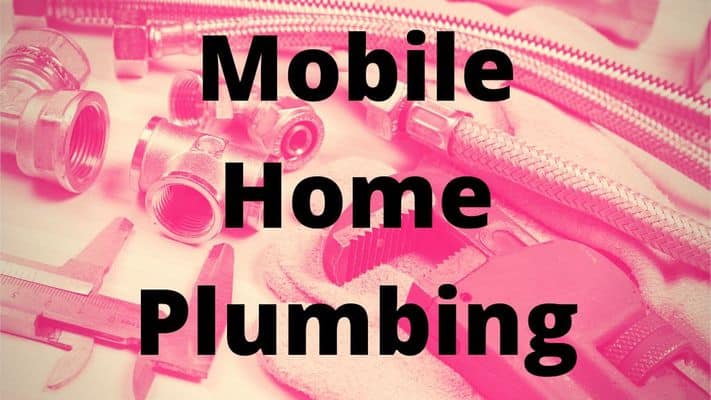Introduction to Mobile Home Plumbing.
Table of Contents
Just like a conventionally built house, your mobile home plumbing connections will need a water supply and a sewer system with which to connect.
The main difference is the stage of the construction process in which the plumbing is completed.
Mobile Home Versus Conventional Construction.
In stick-built /., the plumbing pipes are laid into the foundation and the structure is built around there location.
However, with a trailer, the plumbing is connected after the main structure is complete. This is one of the big advantages of manufactured housing both during construction and for future maintenance.
The underside of the house is essentially open which makes repairs and upgrades really easy.
Do You Need A Licensed Plumber?
More than likely you will need a licensed master plumber. You may also need a sub permit to carry out the work. Some local building departments do not ask for this.
One advantage of Florida is that the mobile home installer can make these connections under his license without needing an expensive master plumber.
So what do we need?
- Water supply…local authority or well.
- Waste disposal system… local authority or septic system.
These decisions need to be established early on in the process. The health department has jurisdiction and it can be a long process to obtain a permit. If public utilities are already in place they need to be stubbed up and clearly marked.
Must Read: How to Easily Replace Mobile Home Windows. Simple DIY Instructions for Home Owners
Water Connections to the Home.
There is usually a 3/4″ male connection near the back door on most homes. Three quarter inch schedule 40 PVC pipe is buried 16 inches underground from the well or the water meter. The water line stays underground until it reaches under the home where it is stubbed up.
Two water spigots with anti-siphon devices are installed one to the front and one to the back of the home. The water shut off valve is added in an accessible location for the homeowner. Inline check valve and pressure relief valve are often included before the final connection to the home.
Sewer Connections Under the Home.
When the home is manufactured the plumbing pipes are taken through the subfloor into the space between the floor and the underbelly.
Now some home builders such as Fleetwood will connect the pipes inside of the floor space. This will leave only 2 or 3 stub outs to be connected under the house.
Some manufacturers such as Jacobson will stub-out every connection straight through the floor. There may be 10-15 connections to be made and the mainline which is connected to the sewer.
Most home manufacturers send almost enough pipe and fitting to complete the sewer plumbing to the perimeter of the home.
From The Home To The Sewer
Once the pipes are all joined together, the mainline is buried as it is brought to the outside of the home. This position is a good location for a clean-out that should be accessible to the homeowner.
Generally, the plumber will run about 20 feet of sewer pipe to the septic tank or utility connection as standard.
What will be the cost?
From the information given above, it should be obvious that the brand of house, the distance to the connections and the terrain will cause fluctuations in pricing. Our company charges $850 for a new mobile home at the time of writing. However, I have heard of plumbers charging upwards of $2500 for the complete job.
Conclusions.
The homeowner in certain locations is allowed by statute to apply for a permit and carry out the installation themselves. That will be up to you but I will say that there are many strict plumbing code regulations to be followed and inspections to pass.

